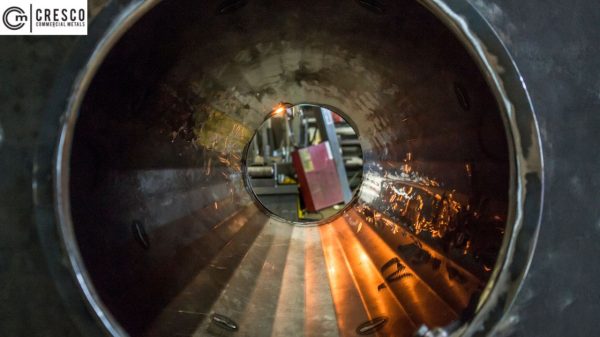In the realm of metal fabrication, efficiency is paramount. One crucial aspect of achieving optimum productivity is streamlining part flow. The process of managing diverse parts through fabrication can be complex, but with the right strategies in place, it becomes a well-orchestrated symphony of precision and speed.
- Categorizing and Prioritizing:
The first step in optimizing part flow is categorizing parts based on their characteristics, sizes, and fabrication requirements. This categorization allows fabricators to prioritize work based on deadlines, complexity, and available resources. By sorting parts into logical groups, you can allocate resources efficiently.
- Lean Manufacturing Principles:
Implementing lean manufacturing principles can significantly enhance part flow. Techniques such as 5S (Sort, Set in order, Shine, Standardize, Sustain) help organize the workspace, reduce waste, and improve overall efficiency. This approach encourages a clutter-free and managed environment, ensuring that the right parts are readily accessible.
- Standardized Workstations:
Creating standardized workstations for specific fabrication processes minimizes setup times and reduces errors. Each workstation should have the tools and equipment to handle specific tasks efficiently. This streamlines the movement of parts between workstations and ensures consistent quality.
- Kanban Systems:
Kanban systems are an excellent tool for managing part flow in metal fabrication. These visual systems use cards or signals to indicate when new parts need to be fabricated or when additional materials are required. Kanban helps maintain a balanced workflow by preventing overproduction and stockpiling of parts.
- Digital Tracking and Monitoring:
Leveraging digital technologies for tracking and monitoring part flow can be a game-changer. Software solutions enable real-time visibility into the status of each part, from raw material to finished product. This data-driven approach allows for better decision-making, reducing bottlenecks and delays.
- Cross-Training of Staff:
Cross-training your workforce is another valuable strategy. When team members are proficient in multiple fabrication processes, they can be flexibly assigned to workstations as needed. This versatility ensures that part flow continues smoothly, even in the event of unexpected absences or surges in demand.
- Continuous Improvement Culture:
Lastly, fostering a culture of continuous improvement is essential for long-term success. Encourage feedback from your team and regularly evaluate part flow processes. Identify bottlenecks or areas for enhancement and implement changes promptly. This commitment to improvement ensures that your fabrication process remains agile and adaptable.
Streamlining part flow in metal fabrication is crucial for achieving efficiency and maintaining a competitive edge. You can optimize your fabrication process by categorizing parts, implementing lean principles, standardizing workstations, utilizing Kanban systems, embracing digital tracking, cross-training staff, and fostering a culture of continuous improvement. These strategies will lead to increased productivity, reduced lead times, and ultimately, satisfied customers.
For more information go to https://crescocustommetals.com/


